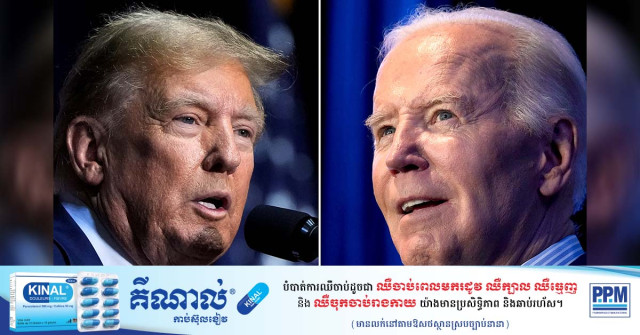Opinion: COVID-19 is Not the ‘Mother of All Pandemics’

- By Sonny Inbaraj Krishnan
- December 28, 2021 4:35 PM
The harrowing prospect in 2022 is that we could come face-to-face with another pandemic and we need to be better prepared.
As 2021 comes to an end, the harsh reality remains: This is not the last pandemic we will see and there will be more existential threats to humanity. We have to do better next time, because whether we like it or not, there will be another pandemic and we need to ensure the lessons learned from COVID-19 can be carried into the future.
As it is, none of the ramifications of the current COVID-19 pandemic will remain in the past and its effects, sadly, will haunt us for years to come.
“For the first time since 1945, the entire world is confronted by a common threat, regardless of nationality, ethnicity or faith. But while COVID-19 does not discriminate, our efforts to prevent and contain it do. And when countries go in their own direction, the virus goes in every direction,” United Nations Secretary-General Antonio Guterres told a virtual COVID-19 summit recently.
A good example is the impact of COVID-19 on vaccine-preventable diseases in children. The COVID-19 pandemic has led to major reductions in childhood immunizations due to the overburdening of health systems and the emerging data is indeed alarming both for rich and poor countries.
In Singapore, there has been a 73.6 percent drop in measles-mumps-rubella uptake in 2020—and this is right across public and private clinics and hospitals. For diphtheria-tetanus-pertussis-inactivated polio-haemophilus influenza or the 5-in-1, there has been a 10.3 percent drop, and a 67.8 percent drop for the pneumococcal conjugate vaccine (PCV).
Herd immunity for measles among 12-month to 2-year-olds has been reduced to between 74 to 84 percent and this is well below the 95 percent coverage that is needed to protect against measles. This now puts the whole community in Singapore at risk for a measles epidemic.
More than 5.3 million children in South Asia missed out on essential vaccines through routine immunization services in 2020—nearly 1.9 million more than in 2019—according to official data published by the WHO and UNICEF. This is the highest number of under-vaccinated children since 2014.
Although the direct health impact of the COVID-19 pandemic on child health is low, this lag in childhood immunizations might pose serious outbreaks of vaccine-preventable illnesses that could see millions of children dying prematurely.
COVID-19 has not only wreaked havoc through the spread of infections but also done terrible harm to economic performance and livelihoods; food security; infant and child mortality and the well-being of women and girls.
“In less than a year and a half, COVID-19 has infected at least 150 million people and killed more than three million. It is the worst combined health and socioeconomic crisis in living memory, and a catastrophe at every level,” stated former New Zealand Prime Minister
Helen Clark and Liberian President Ellen Johnson Sirleaf in a progress report dubbed “Losing Time: End this Pandemic and Secure the Future”.
But all is not doom and gloom and there is a glimmer of hope. In early December, at the closing of the World Health Assembly Special Session, 194 member countries of the World Health Organization committed themselves to negotiating a new global accord to guide the response to future global pandemics, with the first draft global agreement due by July 2022.
“The adoption of this decision is cause for celebration and cause for hope that we all need,” WHO chief Tedros Adhanom Ghebreyesus said in an address to member states at the close of the three-day meeting.
While a global agreement would provide the overarching framework to foster greater international cooperation and provide a platform for strengthening global health security, implementing that would require a muscular, independent WHO to set public health standards, convene nations and to act immediately on the information that emerges.
Let us not lose sight of the fact of the existence of the International Health Regulations (IHR), that were revised in 2005 following the shortcomings in national and global responses to the severe acute respiratory syndrome (SARS) epidemic. The revised IHR provides a legal framework through the WHO to build national capacity for infectious disease prevention and detection and to strengthen global governance to address any public health emergency of international concern. But the WHO’s limited clout in censuring states was clearly evident in the face of increasing IHR violations from its member-countries.
Reflecting on COVID-19: From the initial outbreak in China, notification delays hampered the WHO’s ability to coordinate an international response. In retrospect, the SARS-CoV-2 was already circulating in Wuhan in December 2019 before the WHO issued a global notification in early January 2020. This delay in notifying the WHO of a serious public health threat evoked memories of how China had covered up SARS when it emerged in 2002, reporting it to the WHO only after it began spreading across and beyond southern China.
The new global agreement to strengthen global health security would only work if there were a strong coordinated whole-of-government and whole-of-society effort to strengthen pandemic prevention, preparedness and response. Community participation in an open and transparent manner cannot be left out in pandemic preparedness and governments and the WHO must seek the participation and contributions from civil society organizations.
No-one is spared in a pandemic and the harrowing prospect is that we could face another one pretty soon. It’s easy to be deluded into thinking that COVID-19 is the “mother of all pandemics” and the worse is already over.
But the influential medical journal The Lancet warns us of falling into that mindset. “The present world is highly interconnected, and deadly pathogens can spark potential pandemics in a matter of days,” it wrote in a recent editorial.
Sonny Inbaraj Krishnan is Internews Regional Health Advisor COVID-19 for Asia and a Pandemic Health Journalism mentor. Internews works globally with a network of partners responding to rumours and misinformation in the global ‘info-demic.’















